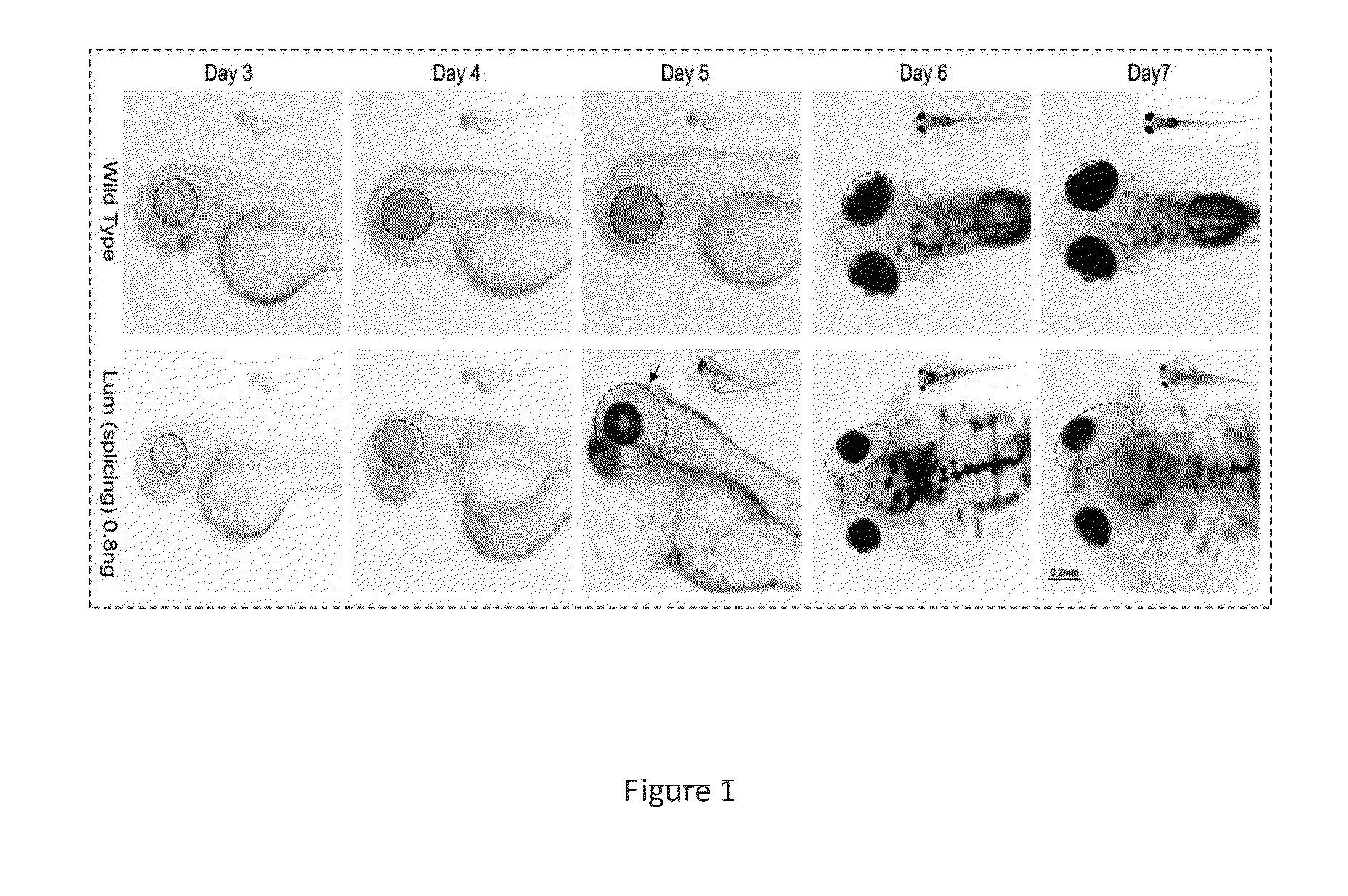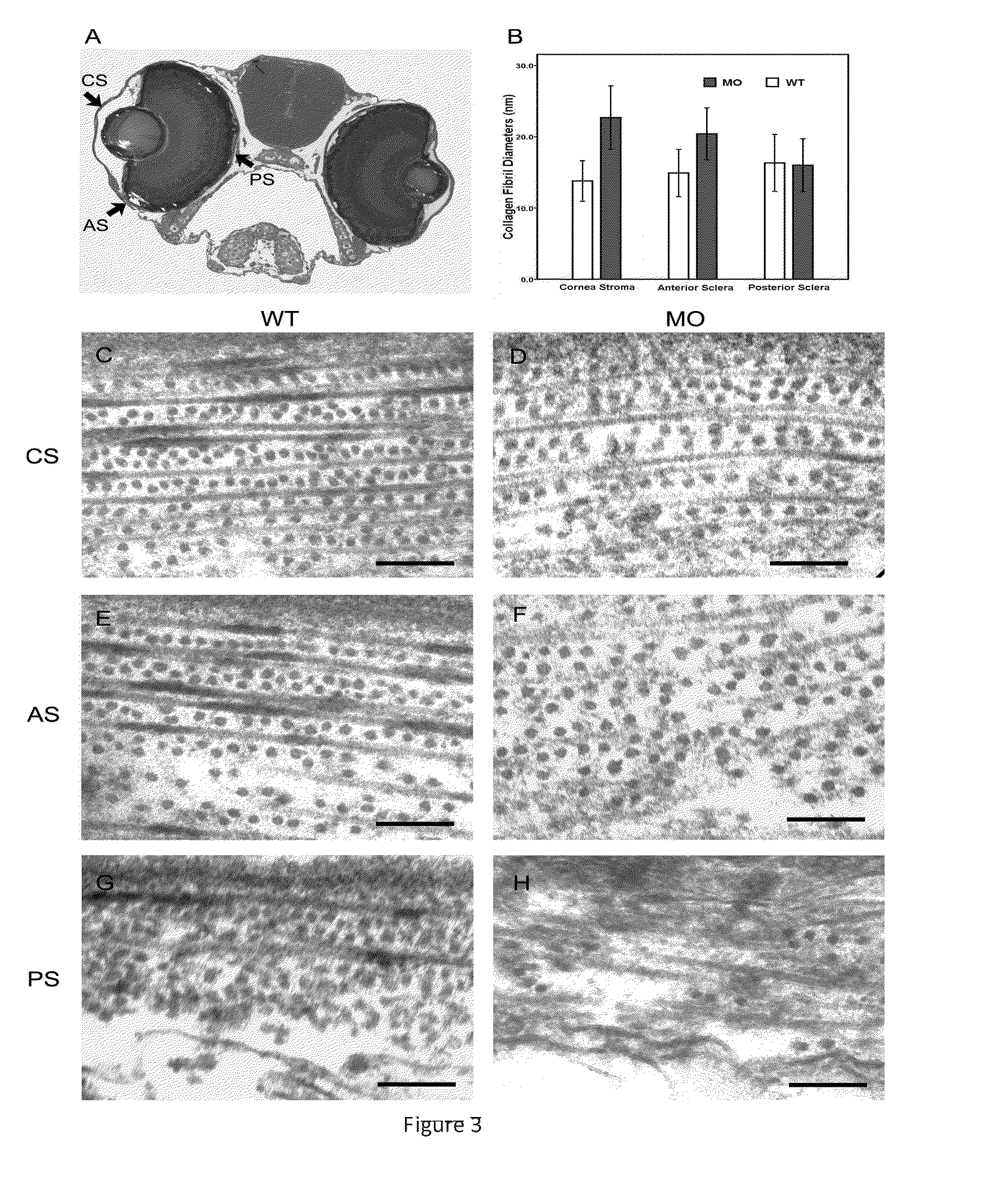Methods for drug screen using zebrafish model and the compounds screened therefrom
a zebrafish and drug screening technology, applied in the direction of drug compositions, peptide/protein ingredients, bulk chemical production, etc., can solve the problems of side effects, blurred vision, and lengthened eyes, and achieve the effect of reducing the ratio of the big eyes in the zebrafish
- Summary
- Abstract
- Description
- Claims
- Application Information
AI Technical Summary
Benefits of technology
Problems solved by technology
Method used
Image
Examples
examples
Materials and Methods
[0162]Zebrafish are raised and maintained according to previously established protocols (Soules K A, Link B A. Morphogenesis of the anterior segment in the zebrafish eye. BMC Dev Biol 2005; 5:12). All experiments are performed on Tuebingen AB zebrafish raised at 28° C. on a 14-h light and 10-h dark cycle and maintained using standard methods. Embryos are staged according to morphological criteria (somite number) (Kimmel C B, Ballard W W, Kimmel S R, et al. Stages of embryonic development of the zebrafish. Dev Dyn 1995; 203(3):253-310) and timed in hours after fertilization. Embryos are generated by natural pair-wise mating, as described in the zebrafish handbook (Westerfield M. The Zebrafish Book; A Guide for the Laboratory Use of Zebrafish (Brachydanio rerio). University of Oregon Press, Eugene, 2nd edition 300P., 1993). For each mating, 4±5 pairs are set up and, on an average; 100±150 embryos per pair are generated. The zebrafish embryo is optically...
PUM
 Login to View More
Login to View More Abstract
Description
Claims
Application Information
 Login to View More
Login to View More - R&D
- Intellectual Property
- Life Sciences
- Materials
- Tech Scout
- Unparalleled Data Quality
- Higher Quality Content
- 60% Fewer Hallucinations
Browse by: Latest US Patents, China's latest patents, Technical Efficacy Thesaurus, Application Domain, Technology Topic, Popular Technical Reports.
© 2025 PatSnap. All rights reserved.Legal|Privacy policy|Modern Slavery Act Transparency Statement|Sitemap|About US| Contact US: help@patsnap.com



